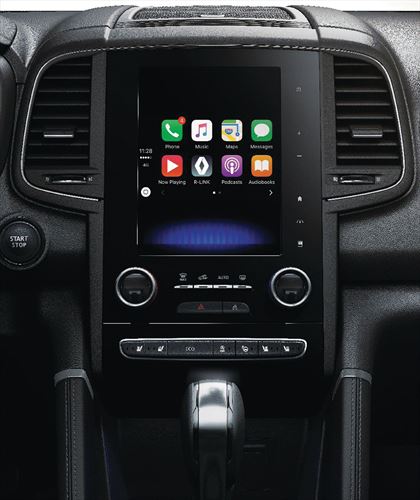The arrival of the first-generation Renault Captur was timed with a level of perfection that would suit a Swiss railway. It may not have been the first small SUV to hit the market, but it was early enough to ride the crest of a wave that's since become a tsunami of high-riding, compact cars.
A big part of the Captur’s success was its distinctive looks with a splash of customisation. This helped it stand out from the crowd and, for this second-generation Captur, Renault's stuck with the same theme.
But while it might look similar on the outside, inside and underneath it’s a whole new ball game. Plusher plastics, more substantial switches and upgraded digital displays aim to give it more pizazz, especially in top-spec models. And a slight growth spurt over its predecessor helps to realise more space for passengers and their luggage.
Under the bonnet, you’ll find a range of modern petrol and diesel engines, with power outputs ranging from 93bhp all the way up to 158bhp. The punchiest power figure belongs to the E-Tech plug-in hybrid, which combines a petrol engine with an electric motor to reduce emissions and offer electric-only driving.
So, if you already own an original Captur or you’re thinking about buying the Renault Captur 2020 for the first time, don’t be duped by the latest car's familiar looks – there’s plenty to discuss. And that’s no bad thing, given how competitive the small SUV class is, with the keen-handling Ford Puma, the spacious Skoda Karoq and the comfort-orientated Volkswagen T-Roc among the rivals to consider.
Performance & drive
Opening the range is the 66KW Turbo Captur petrol that comes exclusively with a five-speed manual gearbox. We'd recommend the 88KW turbocharged Captur EDC four-cylinder petrol is the best all-round engine in the Renault Captur 2020 range at Group 1 Renault. As long as you keep the revs past 2000rpm, it has enough oomph for stress-free travel around town and on motorways alike. You can opt to have the 88kW model with a manual or EDC gearbox.
Handling
The Captur’s steering is precise enough and light around town. It's capable and there's far less body lean than you'll experience in the Citroën C3 Aircross.
.
Article sourced from: https://www.whatcar.com


























